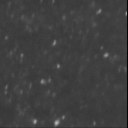Brownian motion (nonfiction): Difference between revisions
No edit summary |
No edit summary |
||
| Line 28: | Line 28: | ||
* [[Gnomon algorithm]] | * [[Gnomon algorithm]] | ||
* [[Gnomon Chronicles]] | * [[Gnomon Chronicles]] | ||
* [[Jimbrowskian motion]] | |||
== Nonfiction cross-reference == | == Nonfiction cross-reference == | ||
| Line 38: | Line 39: | ||
* [https://en.wikipedia.org/wiki/Brownian_motion Brownian motion] @ Wikipedia | * [https://en.wikipedia.org/wiki/Brownian_motion Brownian motion] @ Wikipedia | ||
=== Social media === | |||
[[Category:Nonfiction (nonfiction)]] | [[Category:Nonfiction (nonfiction)]] | ||
Latest revision as of 08:03, 22 June 2024
Brownian motion or pedesis (from Ancient Greek: πήδησις, "leaping") is the random motion of particles suspended in a fluid (a liquid or a gas) resulting from their collision with the fast-moving atoms or molecules in the gas or liquid.
This transport phenomenon is named after the botanist Robert Brown. In 1827, while looking through a microscope at particles trapped in cavities inside pollen grains in water, he noted that the particles moved through the water; but he was not able to determine the mechanisms that caused this motion.
Atoms and molecules had long been theorized as the constituents of matter, and Albert Einstein published a paper in 1905 that explained in precise detail how the motion that Brown had observed was a result of the pollen being moved by individual water molecules.
This explanation of Brownian motion served as convincing evidence that atoms and molecules exist, and was further verified experimentally by Jean Perrin in 1908.
The direction of the force of atomic bombardment is constantly changing, and at different times the particle is hit more on one side than another, leading to the seemingly random nature of the motion.
The Roman Lucretius's scientific poem "On the Nature of Things" (c. 60 BC) has a remarkable description of Brownian motion of dust particles in verses 113 - 140 from Book II. He uses this as a proof of the existence of atoms:
"Observe what happens when sunbeams are admitted into a building and shed light on its shadowy places. You will see a multitude of tiny particles mingling in a multitude of ways... their dancing is an actual indication of underlying movements of matter that are hidden from our sight... It originates with the atoms which move of themselves [i.e., spontaneously]. Then those small compound bodies that are least removed from the impetus of the atoms are set in motion by the impact of their invisible blows and in turn cannon against slightly larger bodies. So the movement mounts up from the atoms and gradually emerges to the level of our senses, so that those bodies are in motion that we see in sunbeams, moved by blows that remain invisible."
Although the mingling motion of dust particles is caused largely by air currents, the glittering, tumbling motion of small dust particles is, indeed, caused chiefly by true Brownian dynamics.
In the News
Brownian ratchet (nonfiction) may be cover story for Brownian racket, according to John Brunner.
American Civil War officer demonstrates Narrow escape problem.
Fiction cross-reference
- Brownian racket - a criminal racket which uses or exploits Brownian motion.
- Crimes against physical constants
- Gnomon algorithm
- Gnomon Chronicles
- Jimbrowskian motion
Nonfiction cross-reference
External links
- Brownian motion @ Wikipedia


